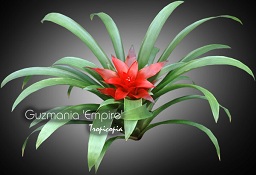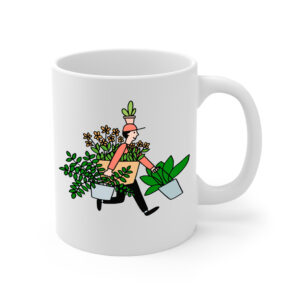Table of contents
Guzmania

Latin Name: Guzmania ‘Empire’
Category: Bromeliad
Family: Bromeliaceae
Origin: Cultivar
Climate: Tropical
Growing Zones: 11-10
Care Instructions
The Guzmania (Guzmania ‘Empire’) is a tropical plant that originates from Cultivar. This bromeliad plant belongs to the Bromeliaceae family and is well-suited for growing in USDA zones 11-10.
Complete Care Guide for Guzmania (Guzmania ‘Empire’)
Watering Requirements
Guzmania ‘Empire’ is a bromeliad that thrives in a humid environment, making its watering requirements unique compared to many other houseplants. It is essential to water the plant properly to ensure its health and longevity. The best practice is to water the central cup of the plant, allowing it to fill with water. This cup should be kept filled, but it is crucial to change the water every week to prevent stagnation and the growth of algae. Additionally, during the growing season (spring and summer), you can mist the leaves regularly to maintain humidity levels. In the winter months, reduce watering slightly, allowing the soil to dry out more between waterings. Overwatering can lead to root rot, so always ensure that the pot has good drainage.
Light Conditions
Guzmania ‘Empire’ prefers bright, indirect light, which mimics its natural habitat in the understory of tropical forests. Direct sunlight can scorch the leaves, leading to brown tips and overall decline in plant health. Ideally, place your Guzmania near a window that receives filtered light or in a well-lit room where it can enjoy bright, indirect sunlight for most of the day. If you notice the plant stretching towards the light or the colors fading, it may be a sign that it needs more light. Conversely, if the leaves are turning yellow or brown, it may be receiving too much direct sunlight. Adjusting its position accordingly will help maintain its vibrant foliage.
Soil Preferences
Guzmania ‘Empire’ thrives in well-draining soil that mimics its natural epiphytic habitat. A suitable potting mix can be created using a combination of orchid bark, perlite, and peat moss, which provides excellent aeration and drainage. This mix allows the roots to breathe while retaining some moisture. It is important to avoid heavy garden soil or potting mixes that retain too much water, as this can lead to root rot. Fertilization should be done sparingly; use a balanced, water-soluble fertilizer diluted to half strength every 4-6 weeks during the growing season. Be cautious not to fertilize during the dormant winter months, as the plant does not require additional nutrients during this time.
Pests and Diseases
While Guzmania ‘Empire’ is relatively resistant to pests, it can still be affected by common houseplant pests such as mealybugs, aphids, and spider mites. Regularly inspect the leaves and the central cup for any signs of infestation. If you notice any pests, treat them promptly with insecticidal soap or neem oil, ensuring to cover all surfaces of the plant. Additionally, watch for signs of fungal diseases, which can occur if the plant is overwatered or if humidity levels are too high without proper air circulation. Yellowing leaves or a mushy base can indicate root rot, which requires immediate action to save the plant. Ensure good air circulation and avoid water accumulation in the central cup to prevent these issues.
Special Care Tips
To keep your Guzmania ‘Empire’ healthy and thriving, consider the following special care tips. First, maintain a consistent humidity level around the plant; using a humidity tray or a room humidifier can help achieve this, especially in dry indoor environments. Additionally, avoid placing the plant near heating vents or air conditioning units, as these can create drafts and dry out the foliage. Regularly clean the leaves with a damp cloth to remove dust, which can hinder photosynthesis. Lastly, be patient with the blooming process; Guzmania plants typically take 1-3 years to flower, and once they do, the bloom can last for several months. After flowering, the mother plant will begin to decline, but it will produce offsets (pups) that can be propagated to continue your Guzmania collection.








